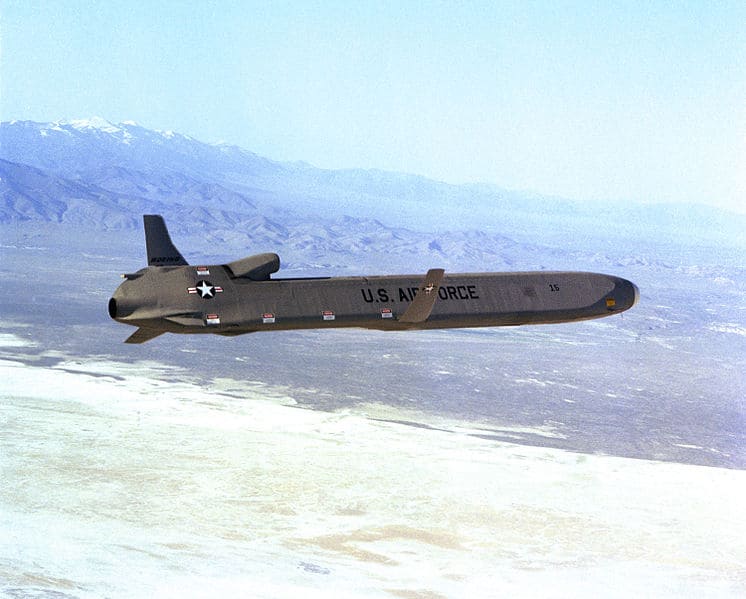
ADVERTISEMENT - CONTINUE READING BELOW
17. The B-52 changed to nuclear-tipped cruise missiles in the 1980s
By the early 1980s, the B-52s that remained in the nuclear force carried as their primary weapon a subsonic air-launched cruise missile (ALCM) designated as the AGM-86. The range of the new weapon allowed the B-52 to approach, but not enter, Soviet airspace. Releasing the weapons while still outside Soviet airspace provided the bombers with greater survivability while flooding the Soviet detection and defense systems with small, fasting moving, targets. Of course, the Soviets responded with improvements to their defenses, and the Air Force reacted in kind with newer cruise missiles with better capabilities. The cost and tensions of the Cold War continued to rise on both sides. By 1982, a single B-52 could carry up to 20 AGM-86 missiles, making it once again a formidable nuclear strike weapon.
Beginning in May 1982, the United States and the Soviet Union discussed placing a rein on their expanding nuclear arms inventories. Throughout the decade the talks started and broke off, in response to changing politics and various international crises. Ultimately the START (Strategic Arms Reduction Talks) led to a treaty known as START 1, which was signed by US President George H. W. Bush and Soviet General Secretary Mikhail Gorbachev in July 1991. One of the conditions of the treaty was the removal of the B-52 as a nuclear strike weapon. The Russians were allowed to verify the destruction of the required number of B-52s both via satellite observation and in-person inspection. The designated B-52s were sent to the Aerospace Maintenance and Regeneration Center (AMARG) near Tucson, to await their fate.

